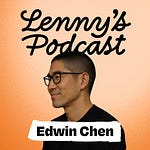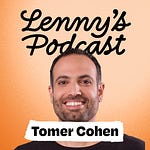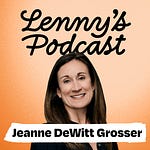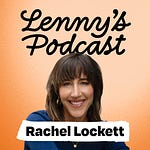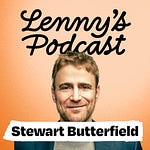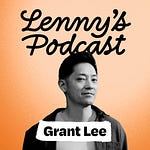Brought to you by:
• Sprig—Build a product people love
• Dovetail—Bring your customer into every decision
• Coda—Meet the evolution of docs
—
Matt Abrahams is a renowned communication expert, with decades of teaching, coaching, and consulting experience. At Stanford University, he teaches a business school class on strategic communication. Beyond academia, he’s a sought-after keynote speaker and consultant, guiding presenters from IPO road shows to prestigious platforms like TED, the World Economic Forum, and the United Nations. His acclaimed podcast, Think Fast, Talk Smart, garners millions of listeners, and his book, Think Faster, Talk Smarter, equips speakers with practical skills for impromptu success. With a previous bestseller, Speaking Up Without Freaking Out, Matt has empowered countless individuals to speak confidently and authentically. In our conversation, we discuss:
The concept of “daring to be dull”
The power of visualization to desensitize oneself to speaking situations
Managing negative self-talk
The WHAT structure for delivering toasts (why we are here, how you are connected, anecdote, thanks)
The ADD structure for Q&As (answer, detailed example, describe relevance)
Breathing techniques to reduce anxiety, such as the double exhale
Concrete speaking structures like What? So What? Now What? and the Four I’s (information, impact, invitation, implications)
Much more
Some takeaways:
Instead of relying on ineffective methods like imagining the audience naked, which can be distracting and inappropriate, harnessing visualization techniques can significantly reduce anxiety and boost confidence. Here’s how:
Prepare: Visualize yourself in the speaking environment.
Detailed imagery: Picture yourself confidently delivering your presentation and receiving positive feedback.
Rehearse: Mentally rehearse every aspect of your presentation going smoothly.
Virtual tools: Consider using virtual reality tools for a more immersive experience.
At the start of a presentation, distracting the audience with a story, video, or written material can draw attention away from you, giving you time to practice calming techniques like breathwork.
Ease the pressure of spontaneous speaking by “daring to be dull.” Rather than fixating on communicating brilliant insights, provide just enough information to answer questions or make points. By engaging in the conversation rather than the content, the exchange becomes more about collaboration and less about your performance.
Strive for connection over perfection. Focus more on creating a strong and genuine connection with your audience rather than obsessing over the flawless delivery of content.
Reframing anxiety as excitement can help shift one’s mindset and reduce the negative impact of anxiety. When faced with a speaking engagement or any situation causing nervousness, remind yourself that the physical sensations you’re experiencing—like a faster heartbeat or shallow breathing—are indicators of excitement, not fear. By reframing these sensations positively, you can shift your mindset and performance in a positive way.
In small talk, prioritize being interested over being interesting. Listen actively, ask insightful questions, and show genuine curiosity about the other person’s thoughts or experiences. This makes them feel valued and heard, cutting through any awkwardness.
Shifting your internal dialogue from self-doubt to self-assurance through positive affirmations like “I have value to add” or “I’ve got this” can boost confidence significantly.
Employ structured speaking techniques to handle stressful situations effectively. When giving feedback, use What? So What? Now What? or the Four I’s (information, impact, invitation, implications) to provide a complete and effective response. When delivering toasts and tributes, use the WHAT structure (why we are here, how you are connected, anecdote, thanks) to create a concise and impactful speech. In Q&A sessions, see questions as opportunities and use the ADD structure (answer, detailed example, describe relevance) to provide complete and valuable responses.
Listen now on Apple, Spotify, Overcast, and YouTube.
Where to find Matt Abrahams:
• X: https://twitter.com/tftsthepod
• LinkedIn: https://www.linkedin.com/in/maabrahams/
• Website: https://mattabrahams.com/
• Podcast: https://open.spotify.com/show/6ll0MwobDt1JW9gYaOONEo
Where to find Lenny:
• Newsletter: https://www.lennysnewsletter.com
• X: https://twitter.com/lennysan
• LinkedIn: https://www.linkedin.com/in/lennyrachitsky/
In this episode, we cover:
(00:00) Matt’s background
(04:50) Techniques for managing anxiety in public speaking
(10:57) Dare to be dull
(13:40) Reframing anxiety as excitement
(16:08) Using mantras to boost confidence
(18:45) Managing negative self-talk
(20:03) Normalizing speaking anxiety
(23:12) Using conversation as a communication technique
(24:52) Using the double-exhale breathing technique
(28:29) Getting present-oriented
(29:46) Using tongue twisters
(33:34) Broad advice for speaking on the spot
(38:35) The PREP structure
(38:59) The What? So What? Now What? structure
(42:10) Toastmasters and improv
(45:31) Getting better at small talk
(51:05) The importance of sharing back
(52:33) Giving feedback
(56:31) Improving toasts and tributes
(01:02:57) Mastering Q&A sessions
(01:07:25) Apologizing effectively
(01:09:29) Closing thoughts
Referenced:
• Think Fast, Talk Smart podcast: https://www.gsb.stanford.edu/business-podcasts/think-fast-talk-smart-podcast
• Think Faster, Talk Smarter: How to Speak Successfully When You’re Put on the Spot: https://www.amazon.com/Think-Faster-Talk-Smarter-Successfully/dp/1668010305/
• Speaking Up Without Freaking Out: 50 Techniques for Confident and Compelling Presenting: https://www.amazon.com/Speaking-without-Freaking-Out-Techniques/dp/1465290478
• Interpersonal Dynamics for High-Performance Executives at Stanford University: https://grow.stanford.edu/browse/interpersonal-dynamics-for-high-performance-executives
• Carole Robin on LinkedIn: https://www.linkedin.com/in/carole-robin/
• David Bradford on LinkedIn: https://www.linkedin.com/in/david-bradford-5531185a/
• Connect: Building Exceptional Relationships with Family, Friends, and Colleagues: https://www.amazon.com/Connect-Building-Exceptional-Relationships-Colleagues/dp/0241986869
• TEDxConcordia—Lenny Rachitsky—Losing Serendipity: https://www.youtube.com/watch?v=5p0VK_-BoJI
• TEDxPaloAlto—Matt Abrahams—Speaking Up Without Freaking Out: https://www.ted.com/talks/matt_abrahams_speaking_up_without_freaking_out
• Alison Wood Brooks on LinkedIn: https://www.linkedin.com/in/alison-wood-brooks-ph-d-7b98b826/
• The Artist’s Way course: https://juliacameronlive.com/the-artists-way/
• Managing nerves, anxiety, and burnout | Jonny Miller (Nervous System Mastery): https://www.lennyspodcast.com/managing-nerves-anxiety-and-burnout-jonny-miller-nervous-system-mastery/
• Dynamic Field Theory as a Framework for Understanding Embodied Cognition: https://www.sciencedirect.com/topics/neuroscience/embodied-cognition
• Study Links Warm Hands, Warm Heart: https://www.npr.org/2008/10/23/96041598/study-links-warm-hands-warm-heart
• Longer Exhalations Are an Easy Way to Hack Your Vagus Nerve: https://www.psychologytoday.com/us/blog/the-athletes-way/201905/longer-exhalations-are-easy-way-hack-your-vagus-nerve
• Breathing Techniques to Reduce Stress and Anxiety | Dr. Andrew Huberman on the Physiological Sigh: https://www.youtube.com/watch?v=kSZKIupBUuc
• I Slit a Sheet: https://www.grandmasnurseryrhymes.com/Islitasheet.html
• The Surprising Health Benefits of Swearing: https://psychcentral.com/blog/the-surprising-health-benefits-of-swearing#1
• 4 Main Elements of PREP!: https://www.ebright.my/post/4-main-elements-of-prep
• What? So What? Now What?: https://modelthinkers.com/mental-model/what-so-what-now-what
• PSB: Problem, solution, benefit: https://deepstash.com/idea/6799/psb-problem-solution-benefit
• Toastmasters International: https://www.toastmasters.org/
• 7 Research-Backed Benefits of Improv Comedy: https://www.psychologytoday.com/us/blog/play-your-way-sane/202303/7-research-backed-benefits-of-improv-comedy
• Listen, Listen, Listen: How to Build Deep Connections: https://nofreakingspeaking.com/blog/listen-listen-listen-how-to-build-deep-connections/
• How to Win Friends & Influence People: https://www.amazon.com/How-Win-Friends-Influence-People/dp/0671027034
• Radical Candor: Be a Kick-Ass Boss Without Losing Your Humanity: https://www.amazon.com/Radical-Candor-Revised-Kick-Ass-Humanity/dp/1250235375
• Radical Candor: From theory to practice with author Kim Scott: https://www.lennyspodcast.com/radical-candor-from-theory-to-practice-with-author-kim-scott/
• Minimum viable product (MVP): https://www.atlassian.com/agile/product-management/minimum-viable-product
• How to tell better stories | Matthew Dicks (Storyworthy): https://www.lennyspodcast.com/how-to-tell-better-stories-matthew-dicks-storyworthy/
Production and marketing by https://penname.co/. For inquiries about sponsoring the podcast, email [email protected].
Lenny may be an investor in the companies discussed.







